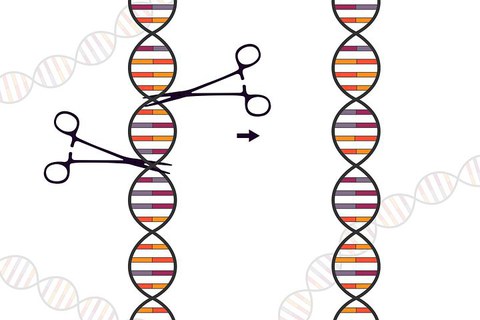Mar 20, 2023
Fact Check: CRISPR/Cas9 - Crazy, Unethical, Dangerous or Great Therapeutical Advance?

CRISPR/Cas9 made it easier to edit DNA. Therefore it tremendously influenced recent biological research.
In 2012, Jennifer Doudna and Emmanuelle Charpentier discovered the gene editing tool CRISPR/Cas9 based on a defense mechanism of bacteria to protect themselves against viruses1. This immense scientific breakthrough also created new possibilities for human gene therapy.
Gene therapy can be used to edit human genes and intends to correct existing genetic defects. There is a consensus that CRISPR/Cas9-based therapy can be applied in the case of fatal diseases that occur during life and are not heritable2. At present there is scientific progress in the application of CRISPR/Cas9 in preclinical and clinical research. Various treatments for genetic and infectious diseases considered incurable are in the pipeline.
There are clinical trials and first treatment attempts using CRISPR/Cas9 technology for haematological diseases3 and lung cancer4. Additionally, research in animal or cell culture models, CRISPR/Cas9 helps to better comprehend fundamental mechanisms underlying HIV-infections or cancer.
In 2020, researchers used CRISPR/Cas9 in rhesus monkeys to disable SIV-DNA, which is considered to be the origin of HIV. This could be a progress towards new HIV therapy5. Another example for promising CRISPR/Cas9-based therapy is that Human-Papilloma-Virus-induced cervical cancer was prevented from growing in mice4.
In theory CRISPR/Cas9 can be also used to treat heritable diseases and prevent kids from diseased parents from inheriting the disease and becoming sick themselves. This technique is called human germline gene-editing (HGGE) since it changes the reproductive cells. Even though HGGE comes with many medical chances, permanently changing the DNA of an unborn child, introduced a new broad spectrum of medical, ethical, and societal concerns. It remains controversial and illegal.
The debate on HGGE gained further momentum in 2018, when Chinese biophysicist He Jiankui announced the first gene-edited babies6. He claimed to have introduced a mutation into the embryo´s genomes using CRISPR/Cas9, to make them HIV-resistant. He Jiankui received a three-year jail sentence7.
The core fears and concerns around HGGE involve unpredictable health risks and societal hazards. Even though CRISPR/Cas9 is a very precise gene editing tool, non-targeted parts of the DNA can be mistakenly cut, bearing unpredictable outcomes. Side effects of HGGE concerning both the treated and subsequent generations are neither predictable nor satisfy the medical principles "first do no harm" and informed consent. For these reasons, HGGE currently remains limited to laboratory experiments, apart from the He Jiankui affair.
While great effort is put into overcoming potential impediments, such as undesirable off-targets8, many early successes are emerging and contributing towards better health.
Issue 4
Klaudia Ostatek, Kajol Bajaj, Julia Hempel, Natalia Wulff
